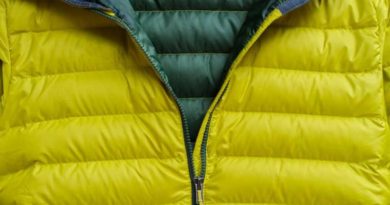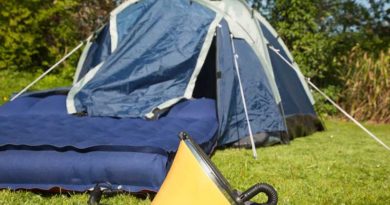How to Measure Torso Length for your Backpack?
A poorly fitted backpack can cause many issues. Not only will it be uncomfortable but it will start to cause you pain and injury. This can commonly happen when people use backpacks that aren’t the right size. This is why you need to accurately measure your torso length.
The top of your torso is the C7 vertebrae. This is easy to find, as when you tilt your head forward, it’s the one bone that sticks out. The bottom of your torso is measured from the top of your hips. You can feel your hips with your hand then draw a straight line to your spine. The difference between these two marks will be your torso length.
It can be a little difficult to get an accurate measurement when you’re on your own. It’s always a good idea to get a friend to help you with this. It’s very difficult to measure your torso at the front of your body as everyone has a different shape, so this wouldn’t be accurate.
Find the right backpack
With this figure in mind, you can then look for a backpack that is going to suit you perfectly. While a high-quality backpack will have several adjustment options, the most important is going to be your torso strap. This can be especially crucial if you’re particularly short or tall and find that standard backpacks simply aren’t suitable.
Backpacks will be sold in one of two ways. They will either be sold in different lengths or, more commonly, they will have one size which has an adjustable torso. In both circumstances, you’ll want to ensure that your size is being covered so you can get a secure fit.
Backpacks with an adjustable torso height can work in different ways but most of them are fairly similar and easy to use. This is the first thing that you’ll need to adjust on your backpack as other adjustments will be dependent on getting this right.
Measure your hip size
Along with your torso size, the hip measurement is also going to be very important. It’s going to be rare that some backpacks will fit your torso but not your hips (or the other way around) but it is best not to presume and double-check it.
This shouldn’t be confused with the beltline that you use for your pants. The hip measurement is going to be higher up. To get the measurement for your hip, you need to find the same spot we did before which is the top of your hipbone, called the iliac crest.
You can then wrap the tape measure around your body over the top of these points on your hip. This will give you your hip size. As with the torso, a backpack will usually have plenty of adjustability on the hips, so you should be covered here.
Getting the right fit
Once you have the right torso and hip measurements, you need to ensure that your backpack can fit properly. It’s easy to get this wrong and misunderstand where the weight of the pack should be focused. Here we’ll look at it in a little more detail.
It’s better to do this as a step-by-step process where you start with the hip belt before moving on to the shoulder straps, load-lifters, and then finally the sternum strap. This will evenly distribute the weight while avoiding pressure points and too much stress on one area.
Step-by-step backpack adjustment
Before you start with adjusting your backpack, it’s best to put some weight in it. You’ll want to simulate whatever it is you usually carry. If you’re adjusting it at home, then just throw some book in there or anything you can find to simulate the weight of your gear. Start with fairly loose straps and then follow this process.
Hips
The padding of the hip belt needs to be over those hip bones we’ve talked about so it’s not digging in. If it’s too low or too high then you can adjust the shoulder straps. Once you’ve got the right spot, then you should tighten it so that it hugs your waist without feeling too constrictive.
You should have enough padding on your hip belt so that it easily covers your hipbones. You’ll also want enough clearance on either side of your buckle to ensure it’s easy to release. Once you’ve tightened this, you can move on to the shoulder straps.
Shoulders
With the adjustments needed for your hip, your shoulder straps will already be quite tight but now is the time to get them in the perfect position. The straps should be tight to your shoulders but without taking all of the weight, as that needs to be shared with the hip belt.
If you start feeling pain on your shoulders during a hike then it’s easy to make small adjustments. The straps should be wrapping around your shoulders with no separation between the strap and your body. If you have the right torso size, this shouldn’t be an issue.
Load lifters
The effect of a loosely fitted bag on your body is underappreciated. Any excess movement will only add strain and the load lifter straps play an important role in giving you a better center of gravity and stop you from fighting against the bag and losing energy.
You want to keep these straps nice and tight but not too tight that they are pinching your shoulders. They also shouldn’t be lifting your shoulder straps off from your shoulder. If they do, then they are either too tight or your shoulder straps too loose.
Sternum straps
The first rule of a sternum strap is that it should be completely straight and should not change the shape of your shoulder straps. It’s meant to act as a supporting strap but some people make it so tight that it starts to compress their chest and make breathing more difficult. It should be situated around heart level or about an inch below your shoulder blades.
It all starts with the torso
It’s important to remember that without a properly sized torso length, it will be almost impossible to make your backpack feel comfortable, regardless of how much you adjust the straps. Make sure you measure your torso correctly and then get a backpack that fits you perfectly.




